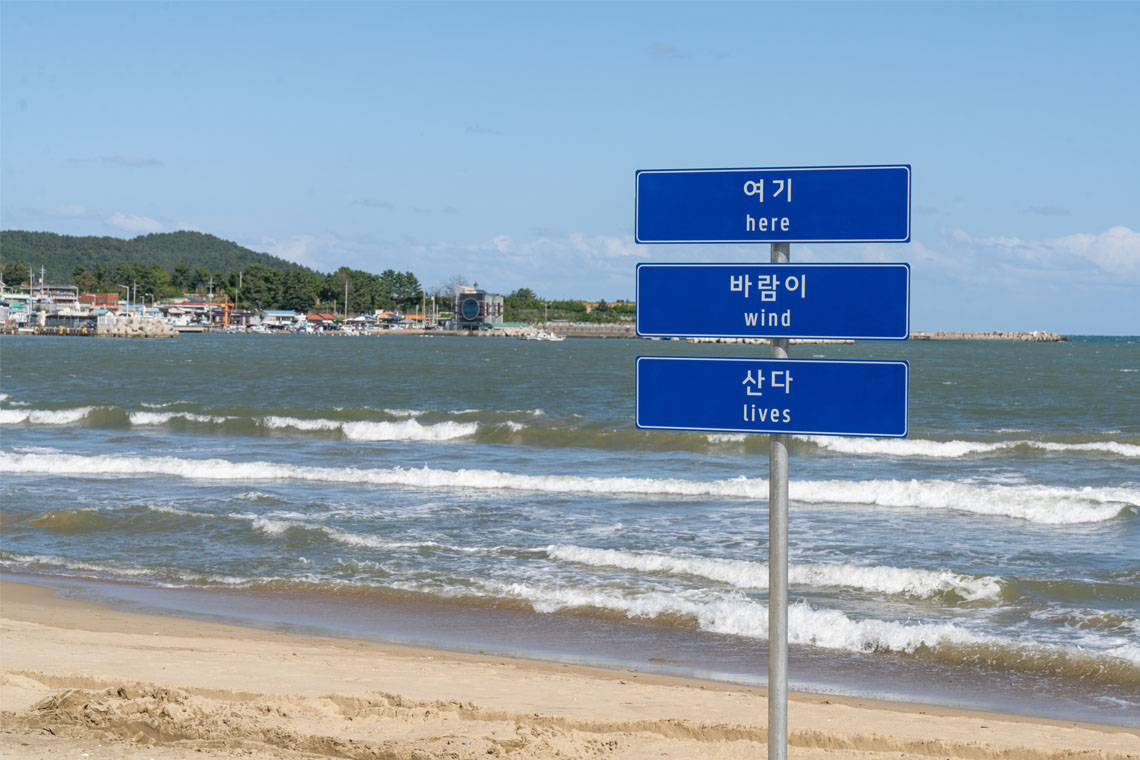This year’s Sea Art Festival in Busan goes beyond visually impactful installations to explore creative connections beneath the surface. Inspired by local stories, craft traditions and knowledge, more than 30 artists and art collectives bring the contemporary community together to examine the complexities of humanity’s relationships with water.
For the second time in a row, Ilgwang Beach in Busan hosts this year’s Sea Art Festival. The biennial public event, first inaugurated in 1987, is an ongoing initiative highlighting the complexity of human interactions with the sea through public art installations across various locations. Irini Papadimitriou, the artistic director of the 2023 edition – entitled Flickering Shores, Sea Imaginaries – explained to Canvas that the starting point was the need to “rethink our relationship with the sea and sea capitalism through our use of resources, medicine, minerals, energy and trade. Almost everything we consume, trade and produce comes from the sea.”
The location of Busan plays a key role in the festival’s focus. The city is host to the largest seaport in South Korea and the sixth-largest container port in the world. The coastal Ilgwang area is also rich in history, culture and commercial connections to the water, from the traditional local fish market to contemporary recreation activities, especially water sports. “It important to understand the connection between the marine and terrestrial, and how these relations have been intensified under capitalism,” Papadimitriou noted during her keynote address at the Ocean Voices Sea Art Festival 2023 Symposium.
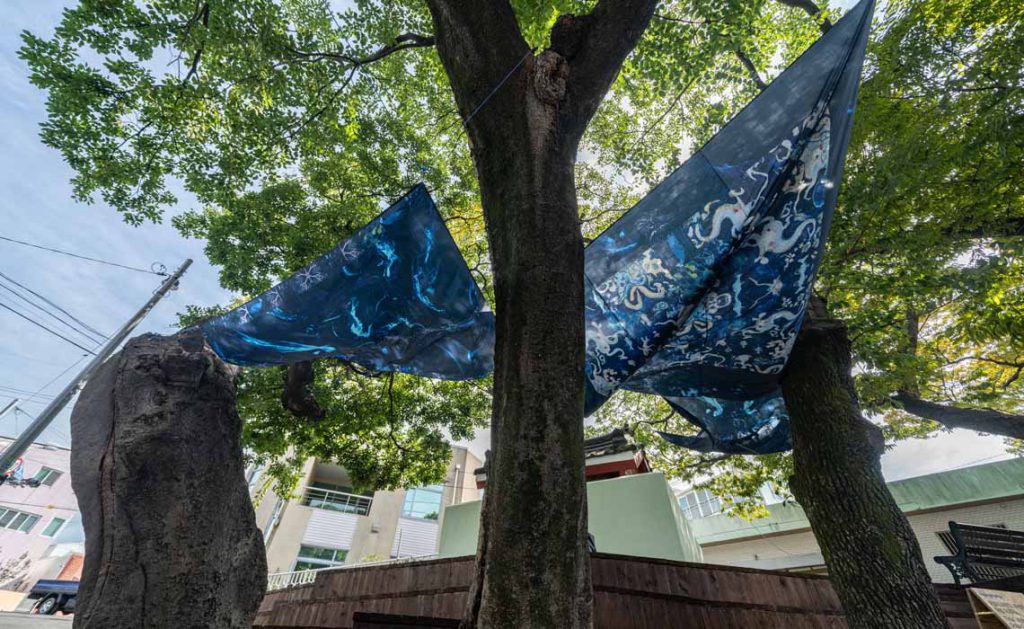
700×500×500cm. Audio 25min. Commissioned by Sea Art Festival 2023. Image courtesy of Busan Biennale Organizing Committee
In particular harmony with the local area was Robertina Šebjanic’s commission, Tidal Whispers: Busan’s Oceanic Tales (2023), in which hand-drawn fabric evokes the ripples of water as it flows in the wind or brings to mind the hanging dried squid nearby that sway in the sun. Through the combination of languages, English and Korean, as well as field recordings of ocean sounds from the Korea Institute of Ocean Science and Technology, the multimedia installation explores communication and tensions between species as a result of increasing underwater noise pollution. “It is a combination of storytelling and singing. [The work allows] you to jump into the story wherever you want, it’s cyclical,” shared Šebjanic. “As you listen, the song starts to change and you don’t know if it is speaking about the fish or from the perspective of the fish speaking about you.”
The location of Šebjanic’s work prompts thoughts about the placement of public art, in terms of meaning, approachability and impact on the local community. For example, Tidal Whispers is placed adjacent to a school and in between the Grandma Shrine – for protecting the haenyeo (female divers), fishermen and marine life – and Grandpa Shrine, which protects the village. The work is therefore in direct dialogue with local cultural traditions while also provoking engagement with the contemporary community at this popular meeting point. For Papadimitriou, it was important to not only highlight the theme but make a statement through practice: “All the works, apart from the films [such as Calypso36°21’s video installation or All is Water (2023) by SUPERFLEX], are new commissions. We produced everything locally, because we wanted to avoid the environmental impact, but it was also about working with the local economy and craftspeople to create the installations”.
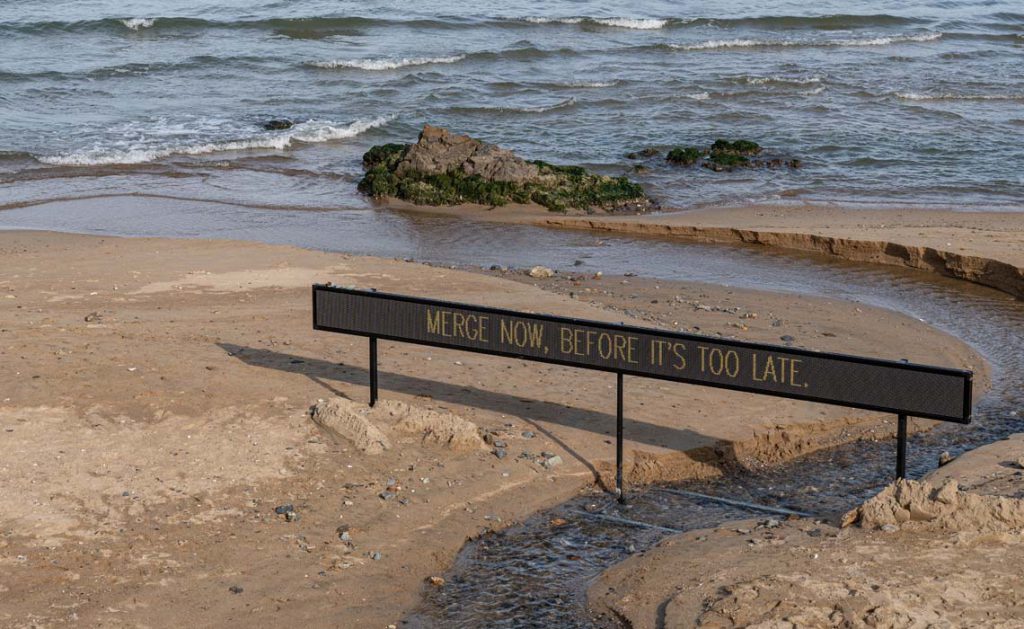
Commissioned by Sea Art Festival 2023. Image courtesy of Busan Biennale Organizing Committee
This successful form of engagement helps give the Sea Art Festival valuable longevity, ensuring continued conversations about relationships to the water. The ongoing debate is also visible in the public programming, workshops and symposia taking place, as well as in the ‘open access’ nature of the art on display across the public beach and at various indoor locations. The works become temporarily familiar as a part of the community, from people and dogs picnicking in the shade of Cho Eun-Phil’s boats covered with blue lace in Between Light and Darkness (2023) and a couple sunbathing next to Yasuaki Onishi’s sculpture Layer of Boundary (2023) to J R Carpenter and Tomo Kihara’s THIS IS NOT A GOOD SIGN (2023) blending in with typical local street signage.
STUDIO 1750’s installation Aquatic Garden (2023) goes one step further by asking the public to become part of the art. The work invites its audience to wear sea creature paper hats made in the Sea Art Festival Lab and weave their way through the installation in a humorous yet dystopian take on the unknown future of marine environments and the speculative mutations arising from the presence of chemicals, radiation and pollution.
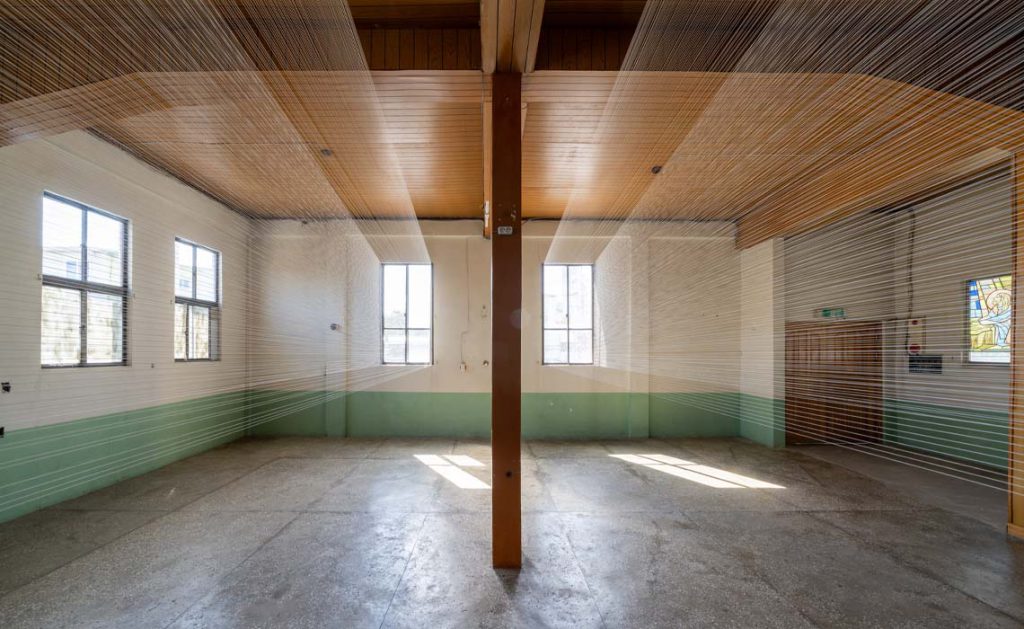
Commissioned by Sea Art Festival 2023. Image courtesy of Busan Biennale Organizing Committee
The very location of the Sea Art Festival ensures a direct dialogue between water and land. Rumors from the Sea (2018/23) by Félix Blume emits a melodic soundtrack created by tidal movements lapping at bamboo flutes, with the sea as ‘performer’. Gary Zhexi Zhang’s Ocean Briefings (2023) creates a conversation between the beach and the viewers with transmitted ‘subtitles’ from the sea that change throughout the festival. Kim Doki’s work Echo, Filled in the Sea (2023) brings residents’ experiences back to the ocean with strands of beads and pearls strung up like a delicate fishing net, sharing local stories, experiences and emotional memories written out in Morse code.
Beyond community interactions, the importance of working with local spaces and architecture was critical to the commissioned works. Placed in the Ilgwangcheon Stream and drawing upon traditional giwa, or roof tiles, seen around the country, Seema Nusrat’s Floating Fragments (2023) suggests the future our planet is facing with rising sea levels, flooding and the ever-conflictive relationship between urbanisation and nature.
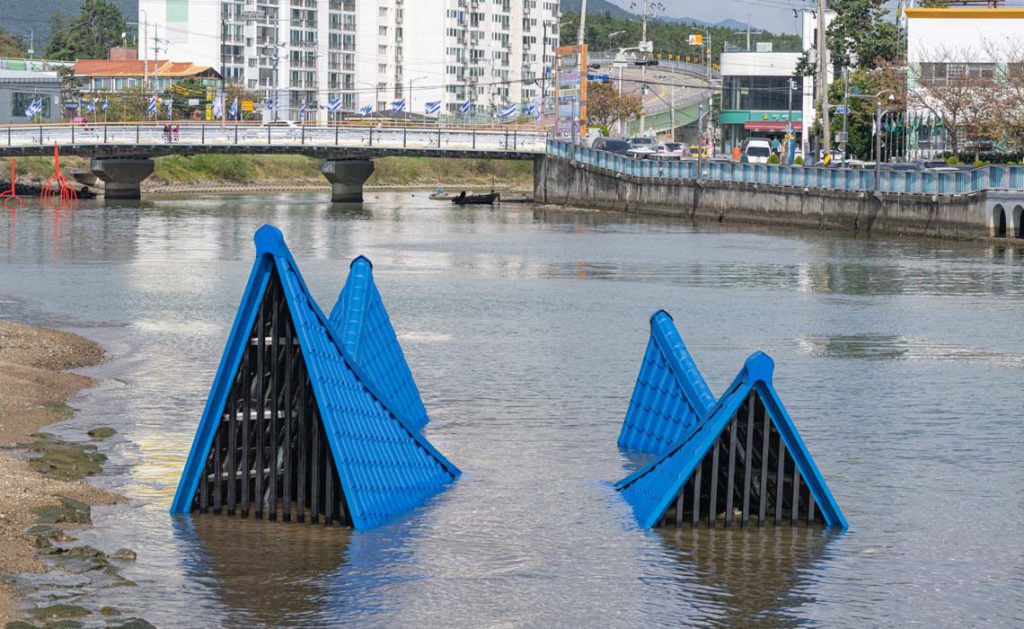
Commissioned by Sea Art Festival 2023. Image courtesy of Busan Biennale Organizing Committee
Muhannad Shono’s And to Flounder in this Sea is Sweet to Me (2023) utilises local architecture as its backdrop. Once home to a Methodist prayer centre and a missionary school, the Old Ilgwang Church is a space of transformations, community and sharing stories. Thousands of white fishing threads strung between windows on either side of the space delicately divide the room, with the lines of threads expanding outwards beyond one window in the direction of the sea. As the sun changes, the threads are illuminated with natural light, reflecting the passing of time and journeys across generations.
The role of public art is highlighted through community engagement and prompts thoughtful discourse around our relationships to water. By bringing together unique perspectives from around the world – the participating artists hail from Morocco, Turkey and Slovenia to Indonesia, South Korea and Saudi Arabia – the Sea Art Festival stands out in terms of how it integrates artworks into the community with both respect and imagination. There are elegant nods to the area’s culture and heritage, combined with the expression of increasingly critical concerns for our common future.


